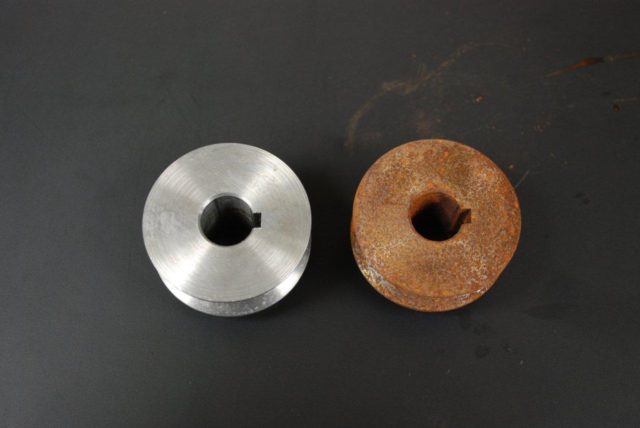
Earth-Friendly
Using eco-friendly solutions for your household is not only beneficial for the environment and the preservation of the planet, but it’s also cost-effective, meaning it’s cheaper and it yields amazing results. The green trend is much more than a passing fad, it’s a way of life that’s swiftly taking over the world, enabling you to live a healthier lifestyle altogether and create a healthier living environment for those dearest to you.
Having that in mind, there are numerous ways you can avoid using industrial chemicals to do common household chores, such as unclogging the drains or removing rust from decaying objects. These chemicals can be detrimental to your health if inhaled or if they come in contact with your skin, and if you want to remove and prevent rust the natural way, you should follow the guidelines below.
It’s also imperative to read reviews on the best rust converter prior to making a purchase of any products. Read about each and every rust converter, and decide which is the most “green friendly” before buying.
Removing the rust
In order to remove rust the eco-friendly way, you will first need a set of some pretty basic supplies. You’ll need a lemon or lemon juice, vinegar or an equally acidic compound, salt, and an old or a dedicated toothbrush. In the case of persistent rust, you’ll need some diluted ammonia although it’s rarely required.
Okay, so the first thing you need to do is rinse the rust-infected area in order to remove as much of it as you can. Next, you want to soak the rusted object in vinegar or lemon juice for 30 minutes. If you can’t soak the object due to its size, you can soak a piece of cloth and place it on the rusted area. When using a lemon to scrub the area, you want to cut it in half and sprinkle some salt on each inner half, and start scrubbing the area. The combination of lemon juice with the abrasive nature of salt should take care of the rust with ease.
On the other hand, if you’re using vinegar, you should combine it with salt and make a scrubbing paste. Use a toothbrush to scrub the area. Depending on the severity of the rust, you might have to rinse and repeat the process, but it should come off completely after the second try. Be sure to eliminate all traces of rust as it can spread again easily.
Preventing the rust from forming
Rust forms when metal surfaces start to oxidize (react with oxygen from moisture) due to water and humidity exposure, and the surface begins to corrode and deteriorate. Rust is not a layer covering the metal material, rust is the metal itself. That is why you should always try to prevent rust from forming in the first place, because every time you remove rust, you’re actually removing a piece of metal itself, which means that you are aiding in the breakdown of the material ? this is not a viable long-term tactic.
To prevent rust from forming you should get in the habit of drying things off meticulously, ventilating humid areas, fixing any leaks and even investing in a dehumidifier. These preventive measures should do the trick, although in order to protect materials that are exposed to the elements and ensure that rust doesn’t form, you should apply a coat of premium rust converter, which will guarantee that the material stays rust-free for years to come.
You can apply additional protective measures by using linseed oil to create a barrier between the elements and the material, although that is a short-term solution. Always keep the rust-prone areas clean and give them plenty of fresh air to breathe and you should be able to keep it at bay.
Rust is an unwanted nuisance that is best dealt with by implementing preventive measures rather than trying to treat the symptoms. With these essential guidelines, you will have no problems removing the existing layers and preventing it from forming in the future.
 WhosGreenOnline.com Your Online Magazine and Directory for Green Business, Product, Service and News!
WhosGreenOnline.com Your Online Magazine and Directory for Green Business, Product, Service and News!

